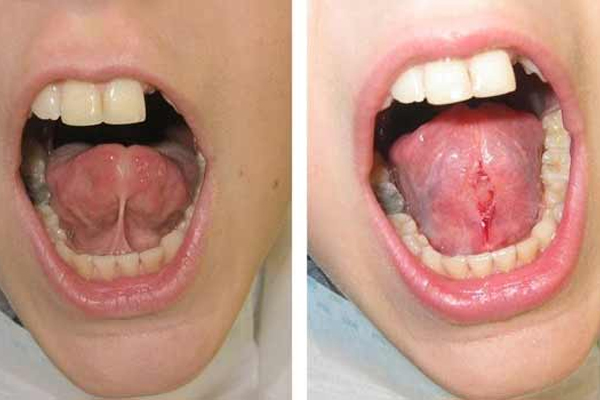Tongue Tie Release
A tongue-tie release (frenotomy or frenectomy) is a procedure used to treat ankyloglossia, a condition where a short or tight band of tissue (lingual frenulum) restricts the movement of the tongue. It is often performed in infants, children, or adults experiencing feeding, speech, or oral health issues related to the condition.
Why Tongue-Tie Release is Needed
- In Infants:
- Difficulty breastfeeding or bottle-feeding.
- Poor weight gain due to inefficient feeding.
- Maternal discomfort during nursing.
- In Children and Adults:
- Impaired speech development.
- Difficulty eating or swallowing certain foods.
- Dental problems, such as gaps between the teeth or gum issues.
- Issues with oral hygiene due to restricted tongue mobility.
- Other Issues:
- Difficulty playing wind instruments or kissing.
Types of Procedures
- Frenotomy:
- A simple and quick procedure where the frenulum is snipped using sterile scissors or a laser.
- Often done without anesthesia in infants.
- Frenuloplasty:
- A more extensive procedure that may involve reshaping and suturing the frenulum.
- Typically performed under local or general anesthesia, especially in older children and adults.
- Laser Frenectomy:
- Minimally invasive with reduced bleeding and faster healing.
- Ideal for precise tissue removal.
Procedure Steps
- Preparation:
- Assessment by a pediatrician, dentist, or ENT specialist.
- Anesthesia, if needed, is administered.
- Release:
- The frenulum is cut or lasered to free the tongue's movement.
- For frenuloplasty, stitches may be used to close the area.
- Post-Procedure Care:
- Monitoring for bleeding or complications.
- Instructions for feeding or eating immediately after the procedure.
Recovery and Aftercare
- Healing Time: Usually heals within 1-2 weeks.
- Post-Operative Care:
- Pain management with prescribed medications or over-the-counter analgesics.
- Tongue exercises to improve mobility and prevent scar tissue formation.
- Maintain oral hygiene to avoid infection.
- Feeding Improvement: Breastfeeding or bottle-feeding typically improves immediately or within a few days for infants.
Risks
- Minimal risks with experienced practitioners.
- Rare complications may include:
- Infection.
- Reattachment of the frenulum.
- Excessive bleeding (more common in frenuloplasty).
Signs You May Need a Tongue-Tie Release
- Persistent feeding difficulties in babies.
- Difficulty pronouncing certain sounds.
- Oral discomfort or limited tongue movement.



